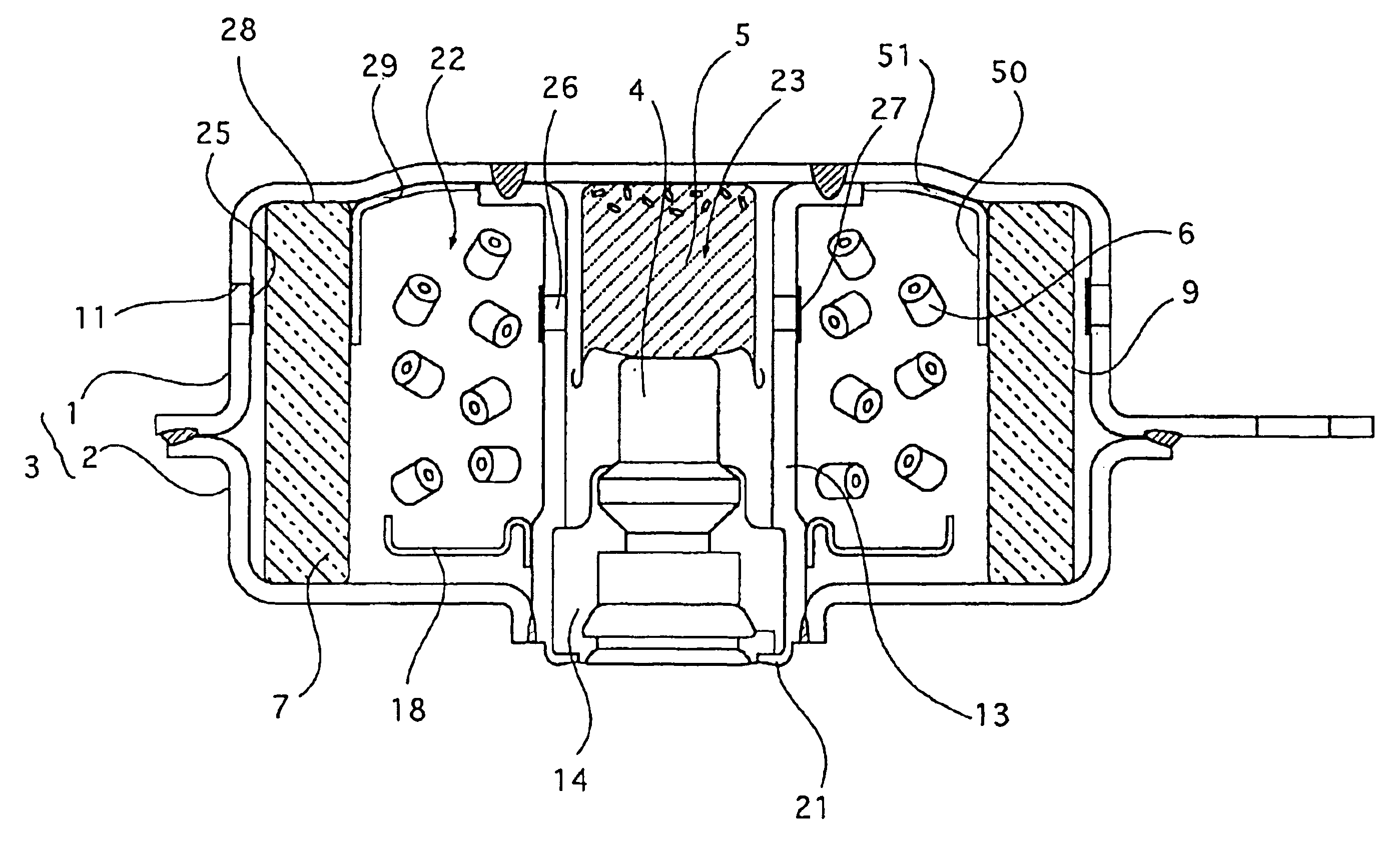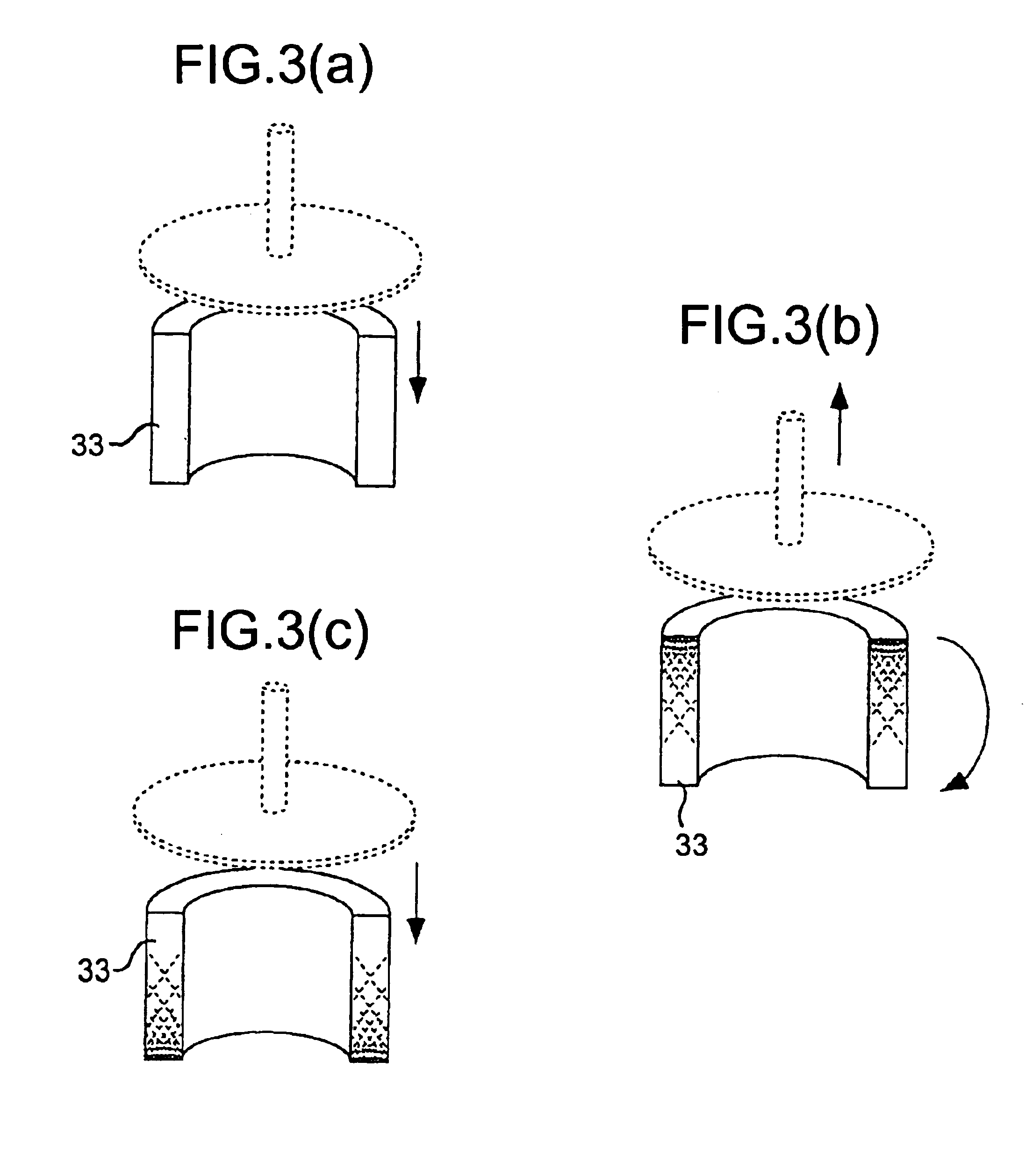Coolant for air-bag gas generator and production method therefor
a technology of gas generator and coolant, which is applied in the direction of chemical/physical processes, vehicle safety arrangements, synthetic resin layered products, etc., can solve the problems of no improvement in the unevenness of radial pressure loss of coolant, and uneven density of coolant in the axial direction. achieve the effect of stable operating outpu
- Summary
- Abstract
- Description
- Claims
- Application Information
AI Technical Summary
Benefits of technology
Problems solved by technology
Method used
Image
Examples
example
Table 1 shows a result of a test of measuring a pressure loss carried out with the above-described coolant at the flow rate of 250 liters / minute. In this test, the apparatus shown in FIG. 6 is used and the following method is adopted.
TABLE 1Data of Pressure Loss of Coolant(mmaq)UpperLowerDifference between upperNo.Allportionportionand lower portions1 φ60 ×φ47 × h29.5 (250 L / min)Product manufactured under the current mass-production17462323213382711316413110411382612513402713613462422Ave.12.241.526.3Product manufactured by the new production (two timescompressing processes)112403192164232103174535104193938151738402614423210Ave.15.841.034.72 φ58 ×φ47 × h26 (250 L / min)Product manufactured under the current mass-production182818102103117143833211248352312592823669352411Ave.8.731.721.0Product manufactured by the new production (two timescompressing processes)1102828026282713103228449292905102723461128302Ave.9.328.727.5
the Upper portion: the upper side is pressed in the second compression...
PUM
| Property | Measurement | Unit |
|---|---|---|
| density | aaaaa | aaaaa |
| diameter | aaaaa | aaaaa |
| density | aaaaa | aaaaa |
Abstract
Description
Claims
Application Information
 Login to View More
Login to View More - R&D
- Intellectual Property
- Life Sciences
- Materials
- Tech Scout
- Unparalleled Data Quality
- Higher Quality Content
- 60% Fewer Hallucinations
Browse by: Latest US Patents, China's latest patents, Technical Efficacy Thesaurus, Application Domain, Technology Topic, Popular Technical Reports.
© 2025 PatSnap. All rights reserved.Legal|Privacy policy|Modern Slavery Act Transparency Statement|Sitemap|About US| Contact US: help@patsnap.com



